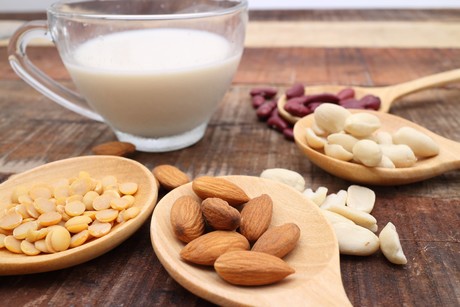Predicted growth for APAC functional dairy products

Health awareness in the APAC region has been increasing and consumers are expected to switch to functional dairy products fortified with vitamins. Therefore, dairy and soy manufacturers should offer bespoke products to APAC consumers, according to data and analytics company GlobalData.
Asia Pacific is the third-largest region in the global dairy and soy food sector, accounting for a value share of 26.2% in 2017. A report by GlobalData titled ‘Opportunities in the Asia-Pacific Dairy & Soy Food Sector’ stated it is forecast to grow at the fastest pace, with a compound annual growth rate (CAGR) of 6.8% over the period 2017–2022.
“Factors such as a steady population growth, acceptance of dairy products as a part of one’s daily diet and rising health awareness levels will boost the demand for dairy and soy food products across the APAC region,” said Monika Bargla, Consumer Analyst at GlobalData. “Simultaneously, the sector is also witnessing a growing demand for soy-based products such as soy milk, especially from vegan consumers seeking non-dairy high protein substitutes.”
Within APAC, China accounted for the largest value share at 34.1%, followed by India (16.8%), Japan (16.1%) and Australia (7.2%) in 2017. According to the report, the major trends driving the demand for dairy and soy in the region are: product specificity; on-the-go; fresh, natural and pure; and novel and experiential.

The demand for milk is driven by the high proportion of young consumers who drink milk on a regular basis and the vegetarian populace in countries such as India, where consumers depend on dairy products to meet their daily calcium and protein requirements.
In 2017, milk was the largest category with a 55% share, followed by drinkable yoghurt (17.1%). These figures are predicted to be similar in 2022, with milk decreasing slightly to 51.6% and drinkable yoghurt increasing to 21.8%. Both cheese and yoghurt remain between 6 and 8% from 2017–2022.
The top three companies in the APAC dairy and soy food sector accounted for only 18.5% value sales in 2017. Inner Mongolia Mengniu Dairy Industry Co Ltd accounted for the highest value share with 6.8%, followed by Yili Group (6%) and Want Want China Holdings Limited (5.7%) during the same year.
“With growing health concerns, consumers are expected to switch to functional dairy products fortified with vitamin D, calcium and omega 3 fatty acids among other essential micronutrients. In addition, with a substantial proportion of Asian consumers perceiving products with lactose-free claims to be healthier for them, the sector is expected to witness a rise in the number of lactose-free product launches in the coming years. Therefore, product specificity will emerge as the key driver where consumers’ focus will be on choosing the ‘right ingredients’, thus prompting manufacturers to offer more bespoke products,” Bargla concluded.
Bird flu at Mainland's Otago farm, no disease yet on other farms
About 1000 samples were received for testing at the Ministry for Primary Industries' (MPI)...
Burcon, Puratos partner for innovative canola protein applications
Burcon NutraScience Corporation, a global technology player in the development of plant-based...
Oily fish, fruits and beer can cut rheumatoid arthritis risk
Moderate alcohol consumption and a higher intake of fruits, oily fish, and cereals are linked to...











